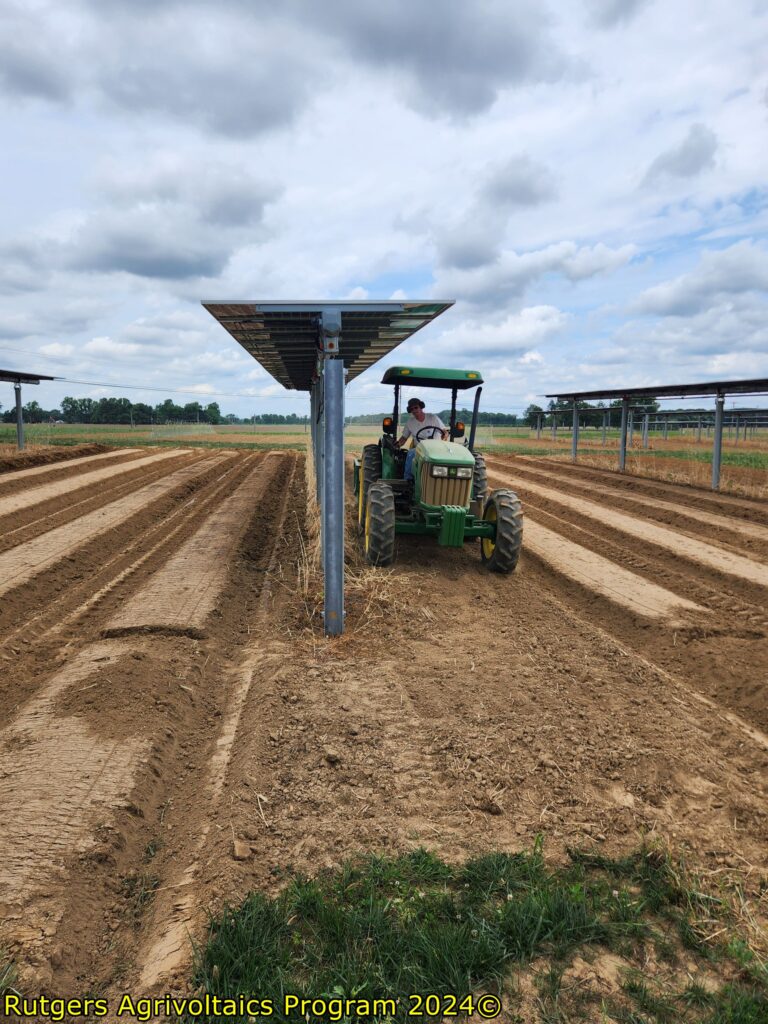Main Content
During the first week of June the ground was prepped and raised beds made for the multi-year specialty crops study at the Rutgers Agricultural Research and Extension Center (RAREC) near Bridgeton, New Jersey. The specialty crops research at RAREC is being lead by members of the Rutgers RAPS Team; a multi-disciplinary team which was established in 2021. The RAREC site is one of, if not, the largest AV site dedicated to specialty crop research in the United States.
The Rutgers Agrivoltaics Program (RAPS) was initiated over 3 years ago with the signing and passage of the Dual Use Solar Act by the New Jersey legislature. In 2023, Agrivoltaic research installations were established at three Rutgers-New Jersey Agricultural Experiment Stations (NJAES). One at the Clifford E. and Melda C. Snyder Research and Extension Farm in Pittstown, NJ; one at the Animal Farm on the Rutgers New Brunswick (SEBS) Campus, and one at the Rutgers Agricultural Research and Extension Center (RAREC) near Bridgeton, New Jersey. Members of the Rutgers Raps Team in collaboration the New Jersey Board of Public Utilities (NJ-BPU) are now in the process of finalizing the Dual-Use Solar Energy Pilot Program.
This year at RAREC, eggplant, pepper, and fresh-market tomatoes will be grown under three different AV systems: two-panel arrays (left); single panel arrays (middle); and no panel (conventional production as a control) to determine the effects caused by the presence of the panels on specialty crop plant growth and yield (Figure 1). Standard production practices for these specialty crops grown in the region will be followed all season.

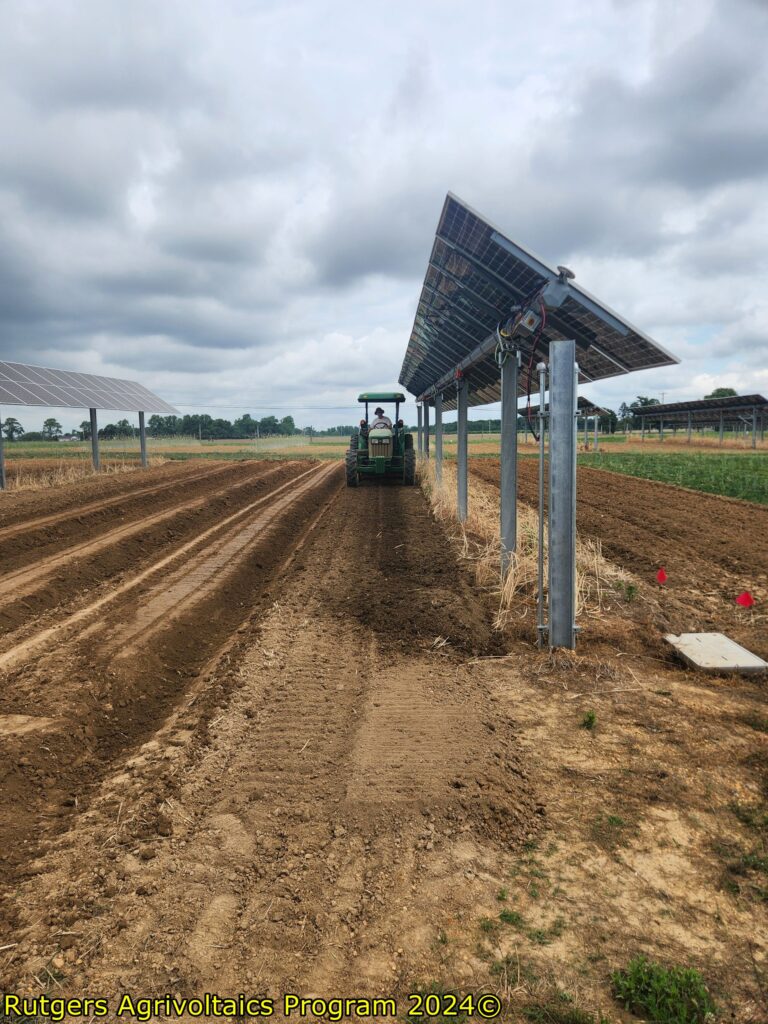
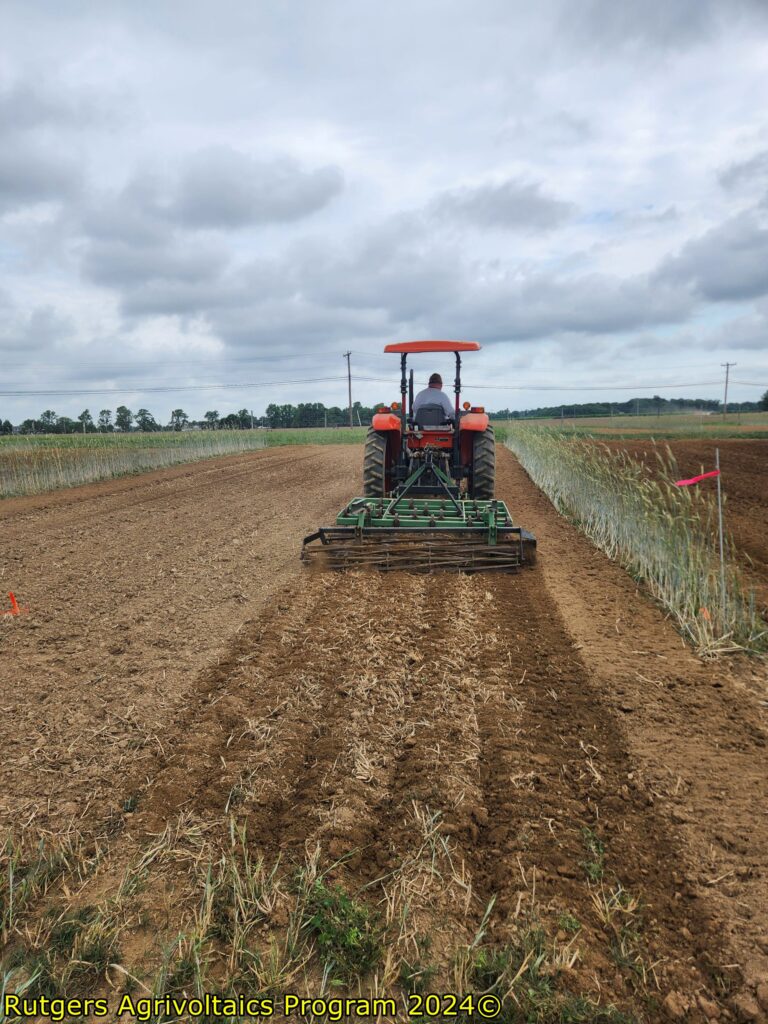
Figure 1. The ground being tilled from left to right under the two panel AV block, the single panel AV block, and the control (conventional) block (no panel).
The ground immediately next to the posts had to be additionally worked after the first tillage to increase the plot size so we could fit 5 raised beds between each set of panels. An offset spader (Figure 2) was used which allowed us to get within 1 ft of both the east and west sides of the panel posts. Due to the rotation of the panels during the day this had to be done at two different times, once in the morning when the panels were facing East and once in the late afternoon when the panels were facing West. Overnight rainfall occurred during this time which caused runoff to the east side of the panels causing the ground to become additionally wet which caused rutting during spading and therefore, forced us to work the ground once again before forming the beds.


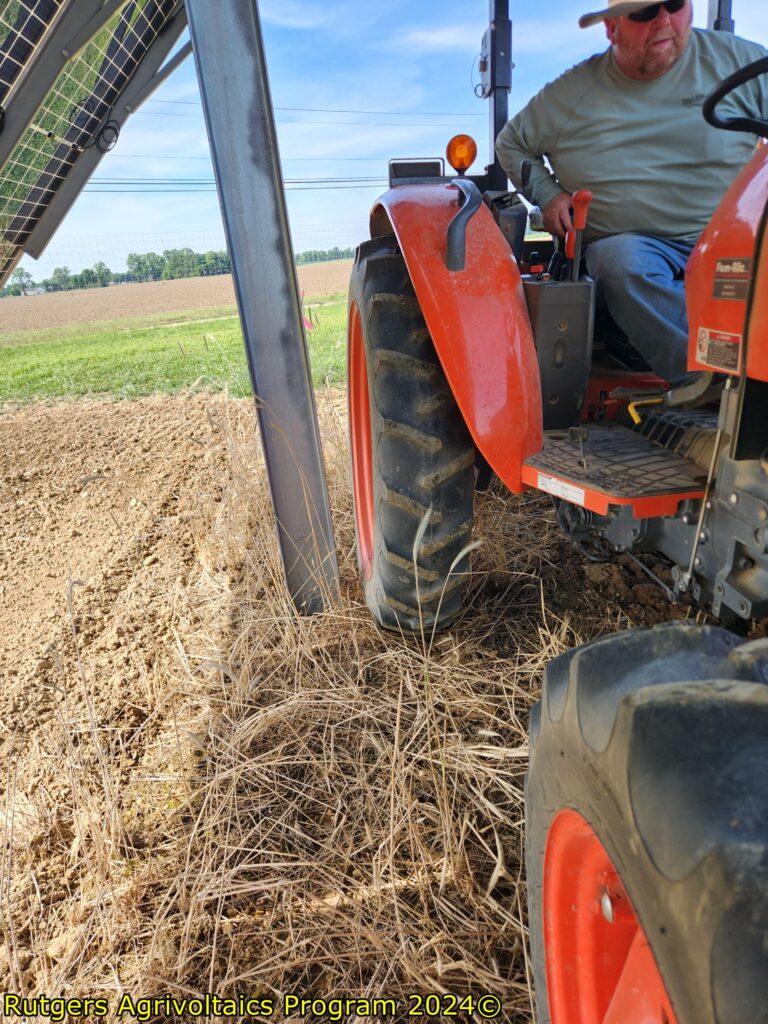
Figure 2. Working the soil close to the solar panel row posts. Note the ruts in the soil left by the tractor due to rainfall and the direction and placement of the panel the day prior.
Once the ground was ready, beds were formed between the panel blocks and the control. Five beds were made spaced approximately 6 foot apart prior to laying the five foot white on black plastic mulch and drip irrigation tape. As during tillage, bed formation was dictated by the position of the panels during the day (side note – we are waiting on access to the software that would allow us to move the panels out of the way). Panel height in the horizontal position is approximately x ft above the soil surface allowing our farm crew to operate a John Deere 5075 (85 HP) tractor beneath them with adequate clearance in the horizontal or in a fixed tilt position.
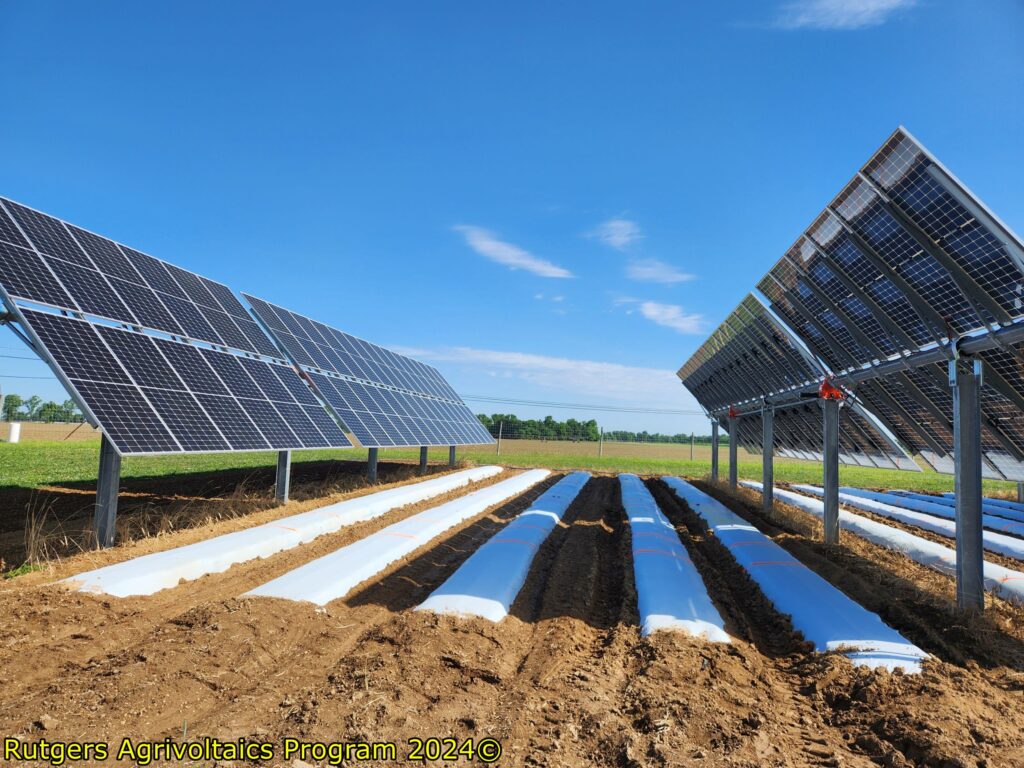
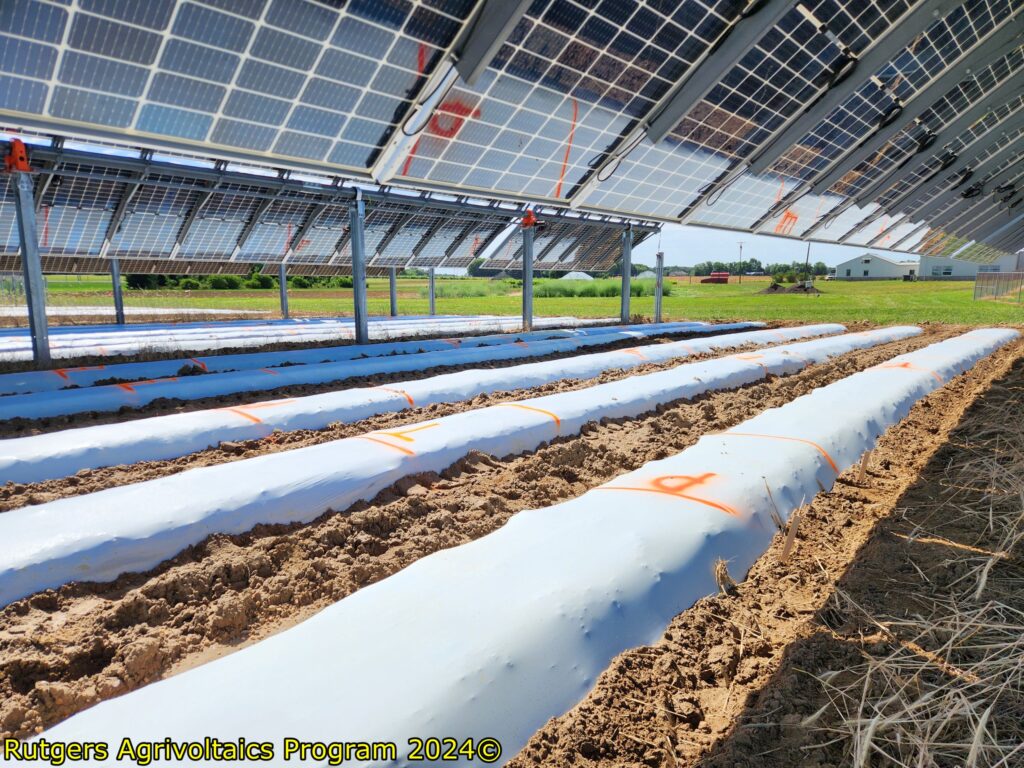
Figure 4. Image of raised beds within the double array panel AV block. Note, the center bed in all array blocks is spaced at exactly at 17 ft on center between each set of panel posts which are 34 ft apart. The additional four beds, two on either side of the center bed were mulched after the center bed and wide enough so there was enough distance and soil for their proper bed formation.
Once the mulch was laid, the drip irrigation system was set up and tested prior to transplanting (Figure 5). Plots were marked out with marker paint prior to transplanting to establish the 15 ft plot lengths and 5 ft breaks as well as marked as to what specialty crop would be transplanted based on a randomized complete block design with array type as block, mulched row within a block as sub-plot, and specialty crop transplanted within a row as sub-sub-plot.

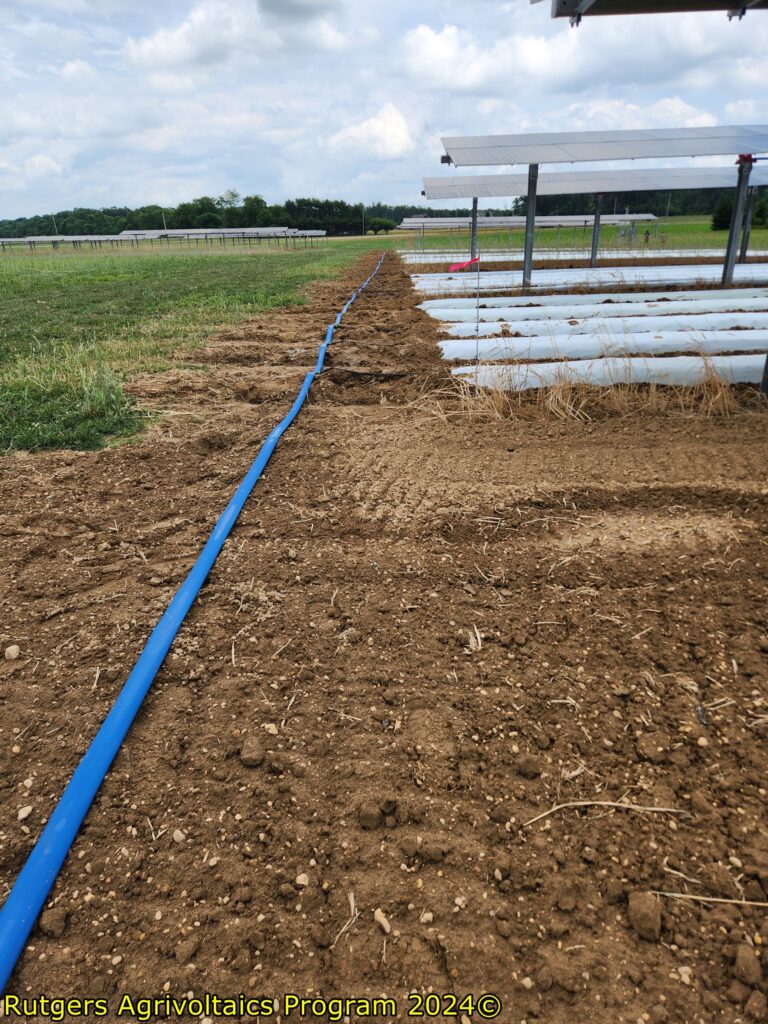
Figure 5. Drip irrigation was set up using a single 2″ header along the north side of the field. In total there are 30 mulched beds (10 per block) with the drip tape set off center to allow transplants to be set down the center of each bed.
Articles and images can be used by Permission from the Rutgers RAPS Team only – For Permission contact RAPS at shawn.sorrels@rutgers.edu.

